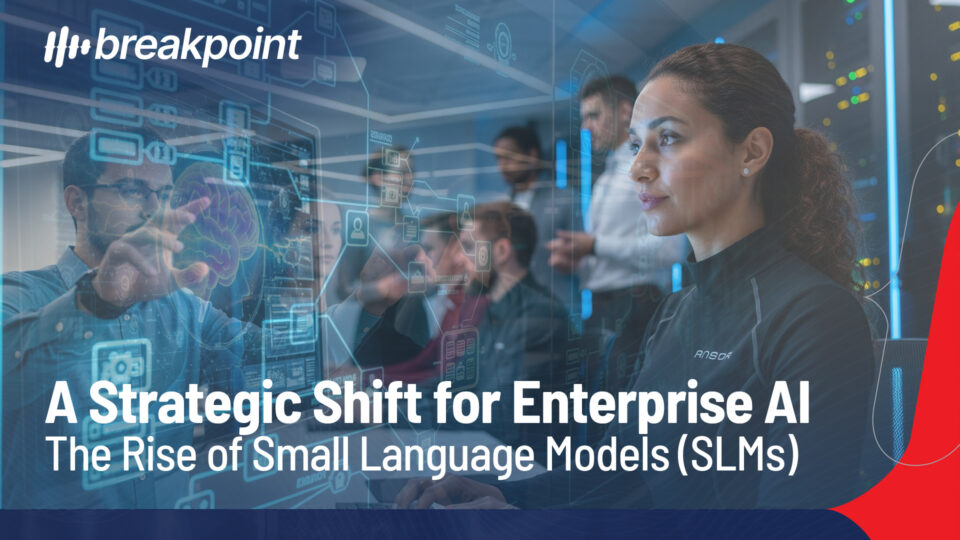A Strategic Shift for Enterprise AI
While large language models (LLMs) like ChatGPT dominate headlines, an equally practical shift is happening with small language models (SLMs). These compact AI systems specialise in specific tasks rather than trying to do everything. By focusing on targeted datasets and efficiency, SLMs offer businesses a cost-effective, secure, and high-performing alternative to bulky LLMs.
Key Difference: Precision Over Breadth
The main contrast between SLMs and LLMs is their design:
- LLMs are trained on vast, general datasets to handle everything from poetry to programming.
- SLMs use smaller, carefully selected data to excel in niche areas like medicine, finance, or engineering.
| Feature | Small Language Models (SLMs) | Large Language Models (LLMs) |
| Size | A few billion parameters | Up to trillions of parameters |
| Knowledge | Specialised (e.g., medical journals) | Broad (e.g., internet-wide data) |
| Best For | Focused tasks (e.g., legal analysis) | Complex, creative tasks |
| Resource Use | Low power, fast responses | High power, slower processing |
For example, an SLM trained on medical case studies will give more accurate diagnoses than a general-purpose LLM.
Why Businesses Are Choosing SLMs
The SLM market is growing fast—worth $6.5 billion in 2024 and expected to rise by 25.7% yearly until 2034. Here’s why:
✔ Lower Costs
SLMs need less computing power, cutting expenses for training and running AI. Smaller firms can now afford advanced AI without expensive servers.
✔ Better Privacy
Unlike cloud-based LLMs, SLMs can run locally on company servers or even smartphones. This keeps sensitive data (like patient records) secure.
✔ Tailored Expertise
Businesses can train SLMs to be digital specialists—analysing contracts, detecting fraud, or answering technical support queries faster than humans.
✔ Works Offline
SLMs are perfect for edge AI (on-device processing). Factories, farms, and remote sites use them for real-time decisions without internet delays.
Where SLMs Excel Today
Industries are already using SLMs for:
- Healthcare: Diagnosing diseases from scans or patient notes.
- Finance: Detecting fraud in transactions or summarising reports.
- Customer Service: Chatbots that understand company-specific data.
- Industry: Monitoring equipment sensors to predict failures.
Challenges and the Future
SLMs aren’t perfect—they can inherit biases from their training data, and some still need moderate computing resources. Yet, their advantages in speed, cost, and security make them essential for businesses.
As AI moves towards specialisation over size, SLMs will power the next wave of smart, efficient automation. Companies investing now will gain a competitive edge in the AI-driven economy.
The Strategic Advantage for Breakpoint’s Customers
As enterprise AI evolves, Breakpoint helps organisations navigate the shift toward right-sized, efficient solutions—whether monitoring network performance, securing transactions, or optimising customer experiences.
Our approach mirrors the SLM philosophy:
✔ Precision-focused tools that address specific business challenges
✔ Resource-efficient architectures designed for real-world deployment
✔ Domain-aware insights tailored to your industry’s needs
While the AI landscape debates size versus specialisation, we remain committed to delivering practical, high-impact solutions—where performance matters more than parameters.
Discover how Breakpoint’s monitoring expertise can future-proof your operations.
